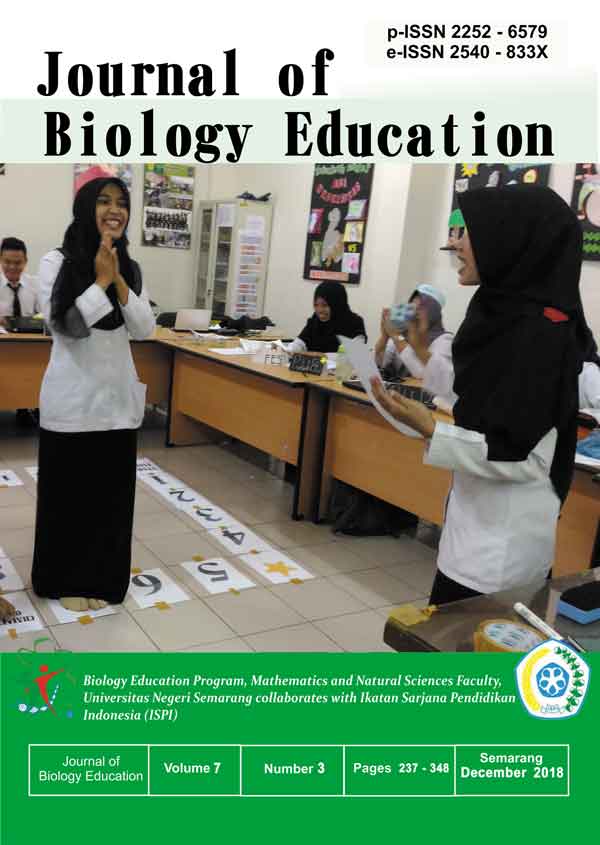The Effectiveness of 5e Inquiry Learning Model by Using Interactive Notebook on The Subject of Cell
Abstract
The purpose of this study was to discover and describe the effectiveness of 5E inquiry learning model by using interactive notebook on the subject of cell. It was a quantitative quasi-experimental research with nonequivalent control group design. The population of this study was the whole eleventh grade science students of SMA Negeri 1 Magelang. The researchers used simple random sampling which took the students from Class Science 1 of eleventh grade as the experimental class and Class Science 3 of eleventh grade as the control class. In collecting the data, the researchers used the result of pre-test, post-test and the grades of students from experimental class (using interactive notebook) then the assessment of control class students’ laboratory work report performance. Normality test, homogeneity test, average difference test, the improvement of learning skill measurement, and classical completeness measurement were used for data analysis. The result shown that 5E Inquiry-Learning Model by Using Interactive Notebook on the Subject ‘Cell’ was effective. It was proved by the average of both of classes (experimental class and control class) was significantly different (tcount (7.36) > ttable (2.00)). The difference was supported by the fact that the improvement of learning skill of experimental class students was better the control class students. For the experimental class, the improvement of student learning skill was categorized as medium (index gained 0.61) while control class’ was low (index gained 0.29). In addition, the experimental class had reached the classical completeness rate (the percentage was 87.89%) while the control class had not reached it yet (around 27.27%).
The copyright of the article once it is accepted for publication shall be assigned to the journal as the publisher. The intended copyright includes the right to publish the article in various forms (including reprints). The journal maintains the publishing rights to the published articles.
This work is licensed under a Creative Commons Attribution 4.0 International License.








